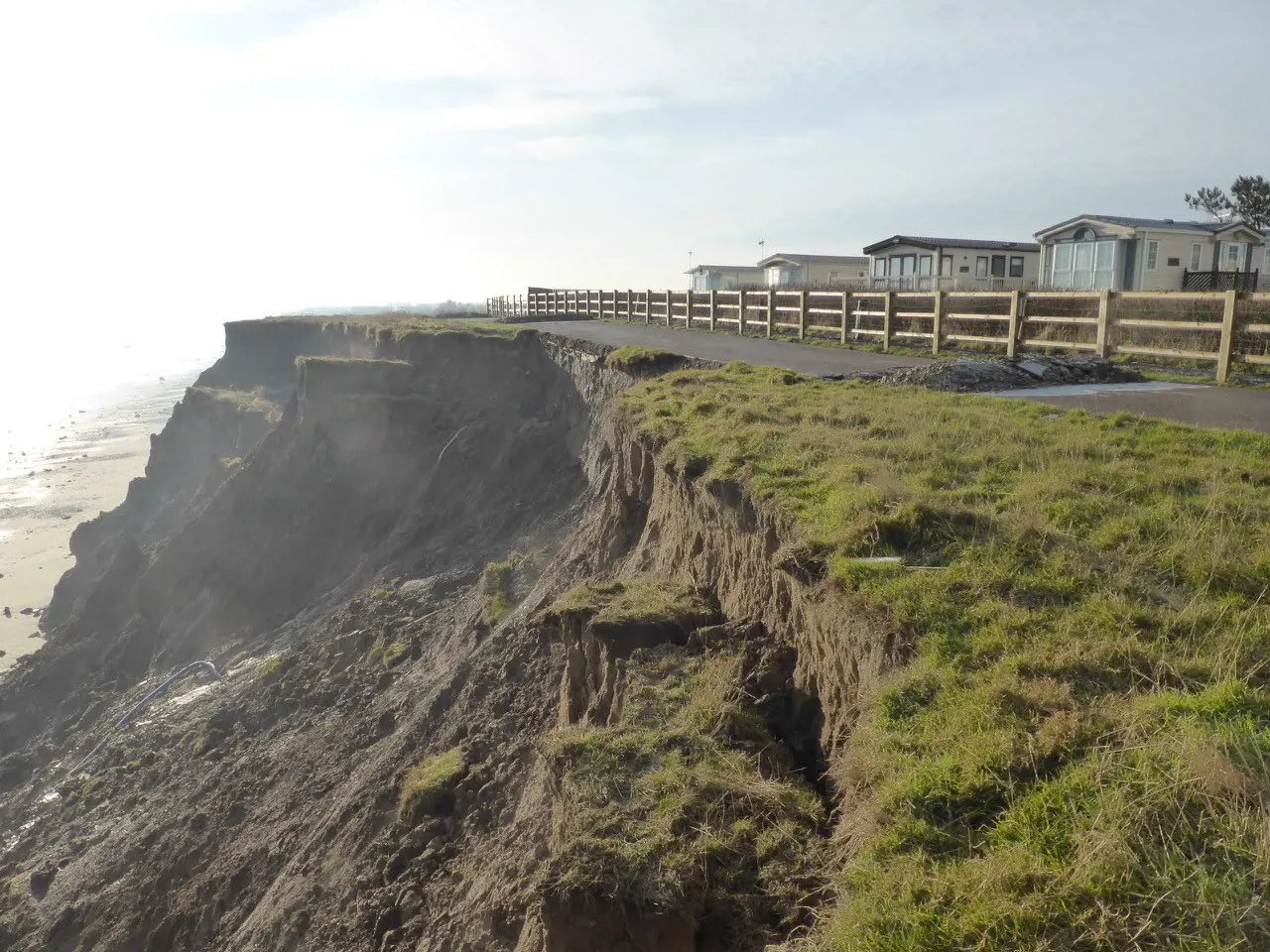Many of us who studied Physical Geography at school or university will remember Yorkshire’s Holderness coastline as providing a classic case study as to the impacts of coastal erosion. This infamy is well-founded and media coverage often reminds us of the devastating impacts that the UK’s fastest eroding coastline continues to have on everyday lives.
Within the East Riding of Yorkshire, local press reported in March 2019 that up to 230 homes could fall into the sea during the next nine decades, as well as more than 500 holiday chalets, statics and touring caravan pitches. More recent articles report how in Withernsea, there are just five metres of clifftop to go before East Riding Council will need to shut a road that will, effectively, cut off 55 homes as well as hundreds more holiday chalets. Yorkshire is not alone in this battle, with similar stories being reported in Norfolk, East Sussex and West Wales to name but a few of the other areas of the UK most severely impacted by erosion.
Whilst coastal defences provide a useful and important role in many local planning authorities’ response to these issues, they are often impractical or unviable and present significant cost to the public purse (as, indeed, do decisions not to protect the coastline). This leaves coastal activities and businesses literally exposed to the elements, putting their future viability at risk in areas where economic challenges are already well documented.
So what else can the planning system do to help?
Paragraph 167 of the National Planning Policy Framework (2019) puts the designation of Coastal Change Management Areas at the heart of its strategy for tackling coast erosion. Within these areas, paragraph 167 goes on to say that Local Planning Authorities should:
a) Be clear as to what development will be appropriate in such areas and in what circumstances; and
b) Make provision for development and infrastructure that needs to be relocated away from Coastal Change Management Area.
In response to provision b), we have seen an increasing amount of coastal planning authorities adopt so-called “roll-back” policies as part of their development plans to proactively manage the hazard of coastal erosion at a local level. Typically, these policies establish the principle of a development that is at risk from coastal erosion being relocated to an alternative, lower risk location which – in other circumstances – may not normally be considered acceptable in wider planning terms.
At Lichfields, we have recently relied on the application of a roll-back policy to successfully justify the relocation of a large number of caravan pitches at a Holiday Park on the east coast of Yorkshire. To do so, our planning submission needed to address a number of matters that were outlined within the pre-application response received from the local authority.
First, was the need to quantify the level of erosion that was taking place at the Park which, given the sheer unpredictability of coastal activity, is as much an art as it is a science. That is to say, erosion rates can only ever be estimated, with storm events and rising sea levels all having the potential to dramatically accelerate these processes. This was observed first-hand, with the above photograph showing the aftermath of a winter storm event in which the cliff edge retreated by several metres over the course of a few hours.
Second, was the need to demonstrate that the proposal was, indeed, a roll-back of existing pitches rather than simply an extension to the Holiday Park ‘via the back door’. This was achieved via a commitment to removing existing pitches from the rolled-back area (following the installation of new ones) and then restoring it back to its original, undeveloped state thereafter. This, at the subsequent planning committee, proved to be a very important factor in persuading Council Members to unanimously vote in favour of the application, against a not insignificant amount of local opposition.
Had the roll-back policy not existed – and it is noted that the neighbouring coastal authority has no such provision within their adopted development plan - then the same proposal would simply have been considered as new development in the countryside, with other local plan policies and material considerations taking centre stage in the determination of the application. Would it still have been approved? Probably. But a scheme of a more contentious nature may not have been. Moreover, the fact that the roll-back policy did exist helped establish the acceptability of the principle of the proposal from the outset. This, in turn, gave the Holiday Park operator the confidence to respond to the threat of coastal erosion now and in advance of it adversely affecting their business or comprising the safety of its guests. This surely has to be what good planning is all about.
Image credit: Alastair Tindle



